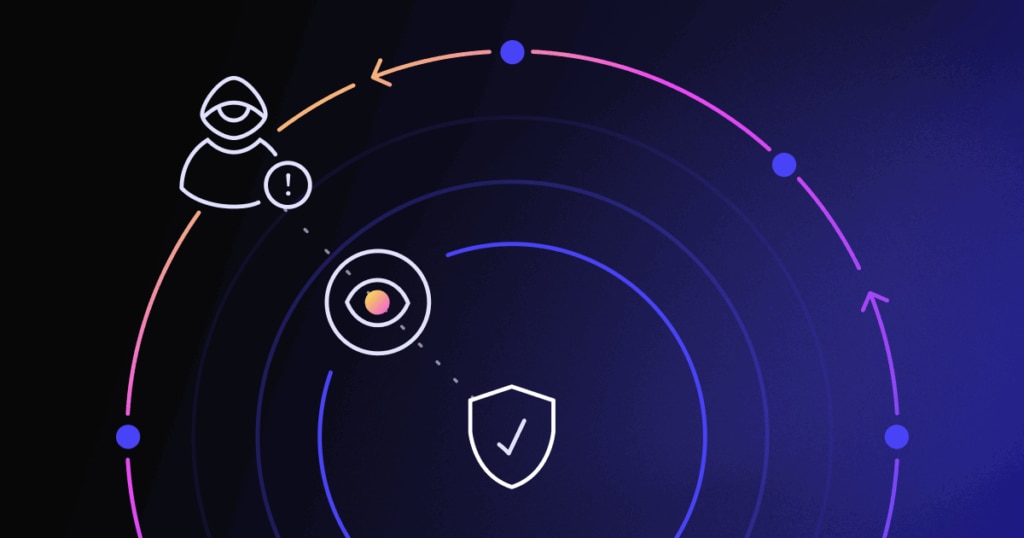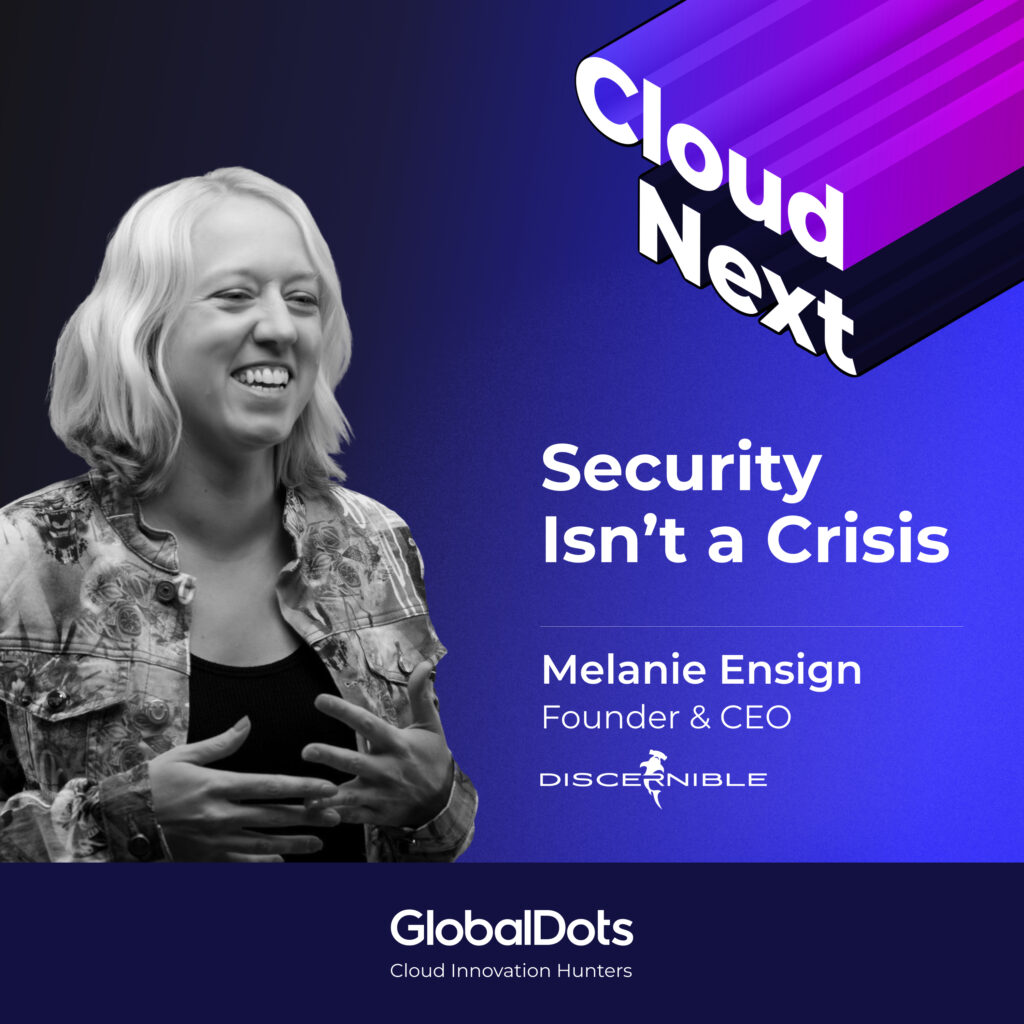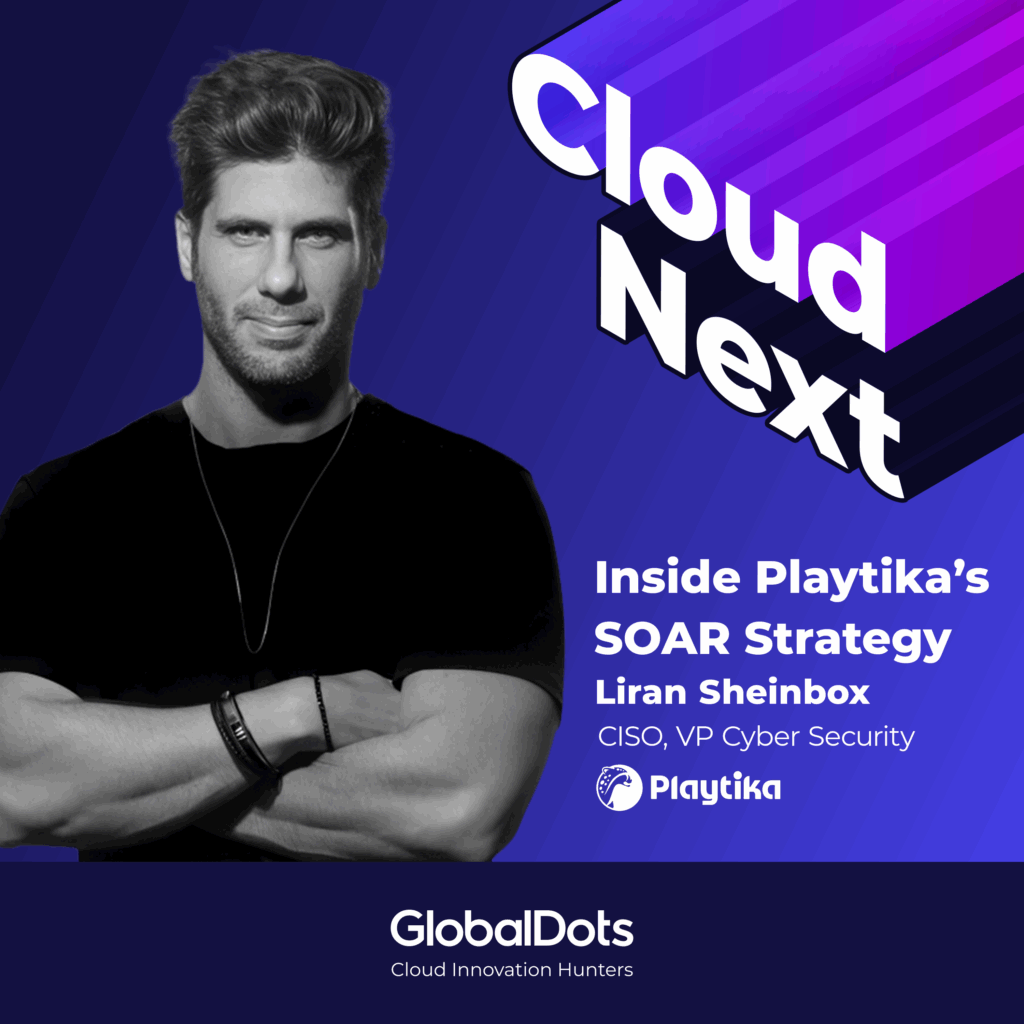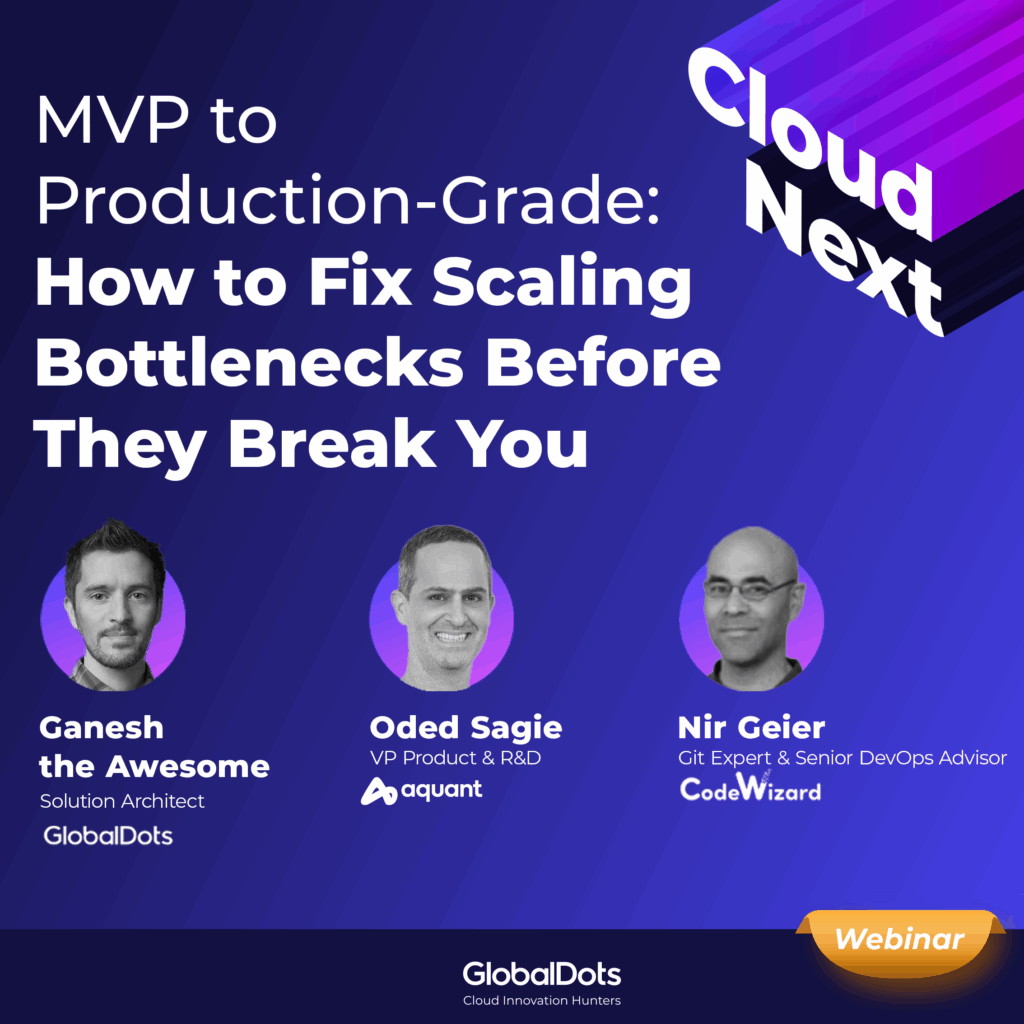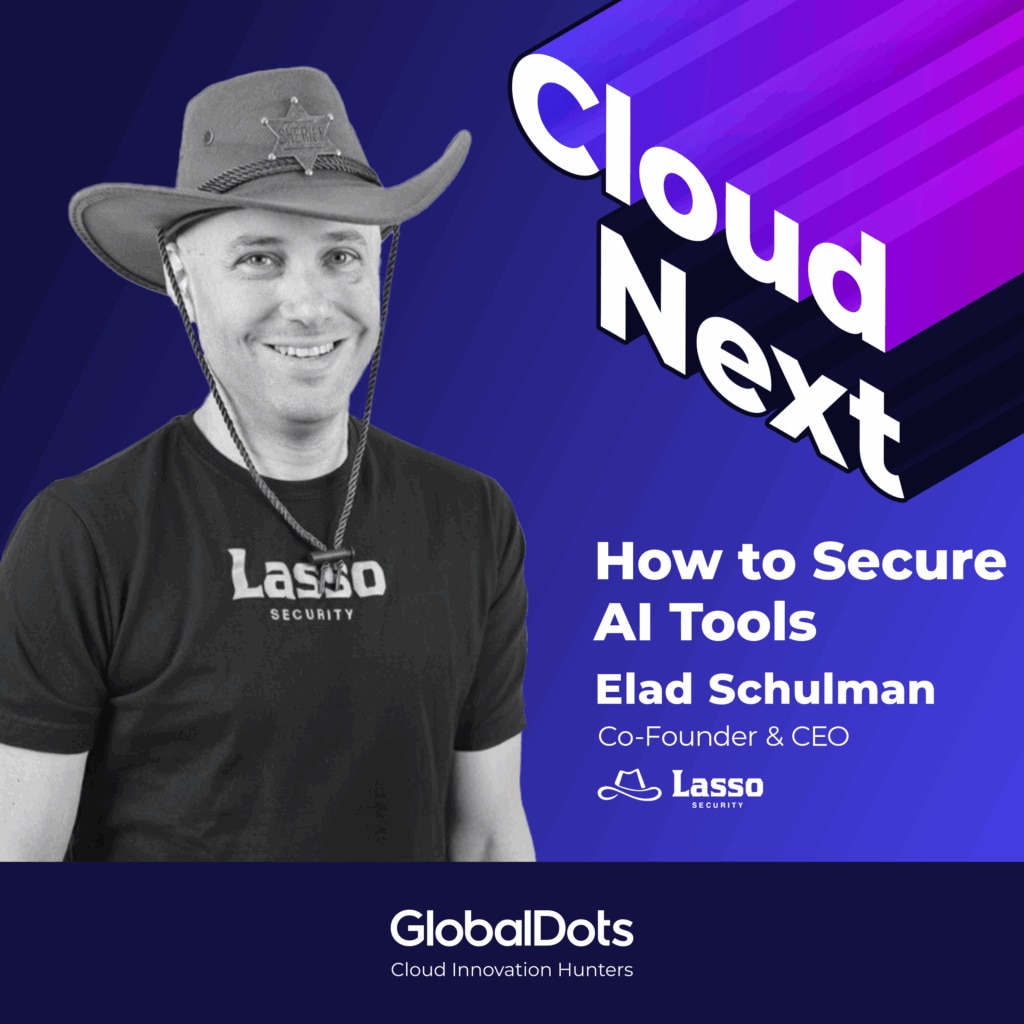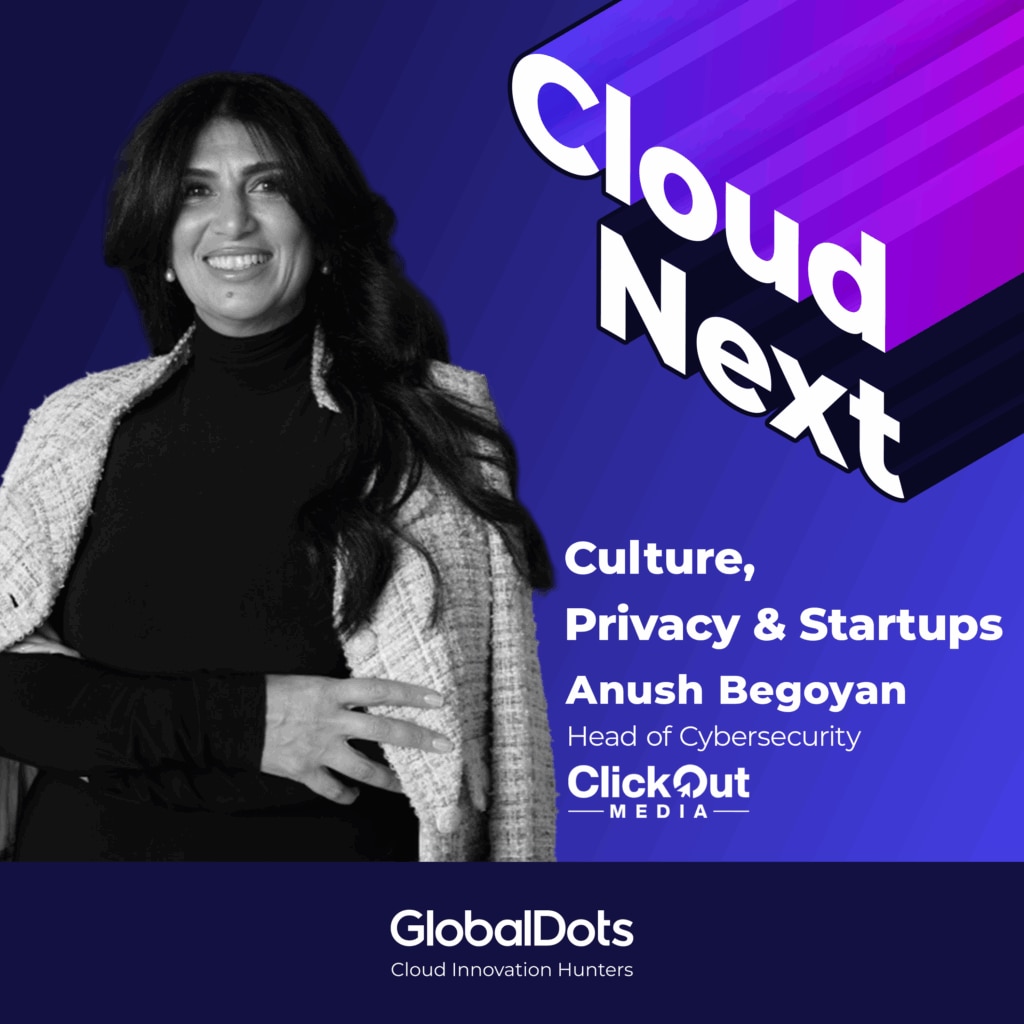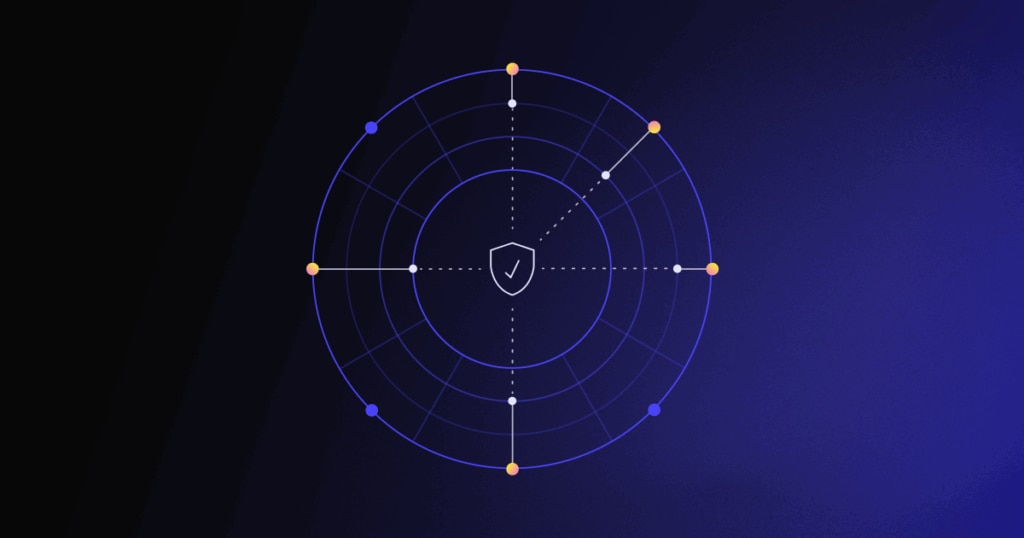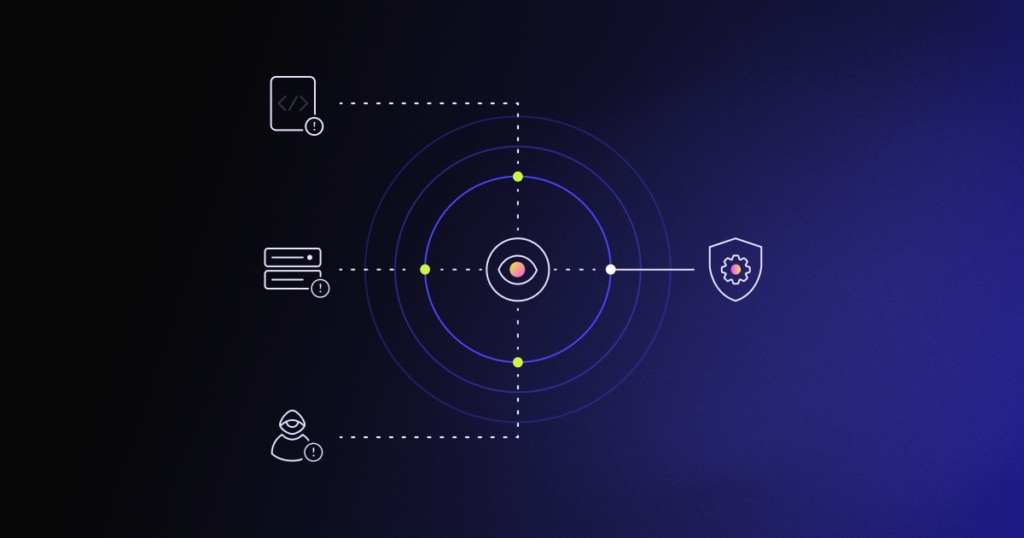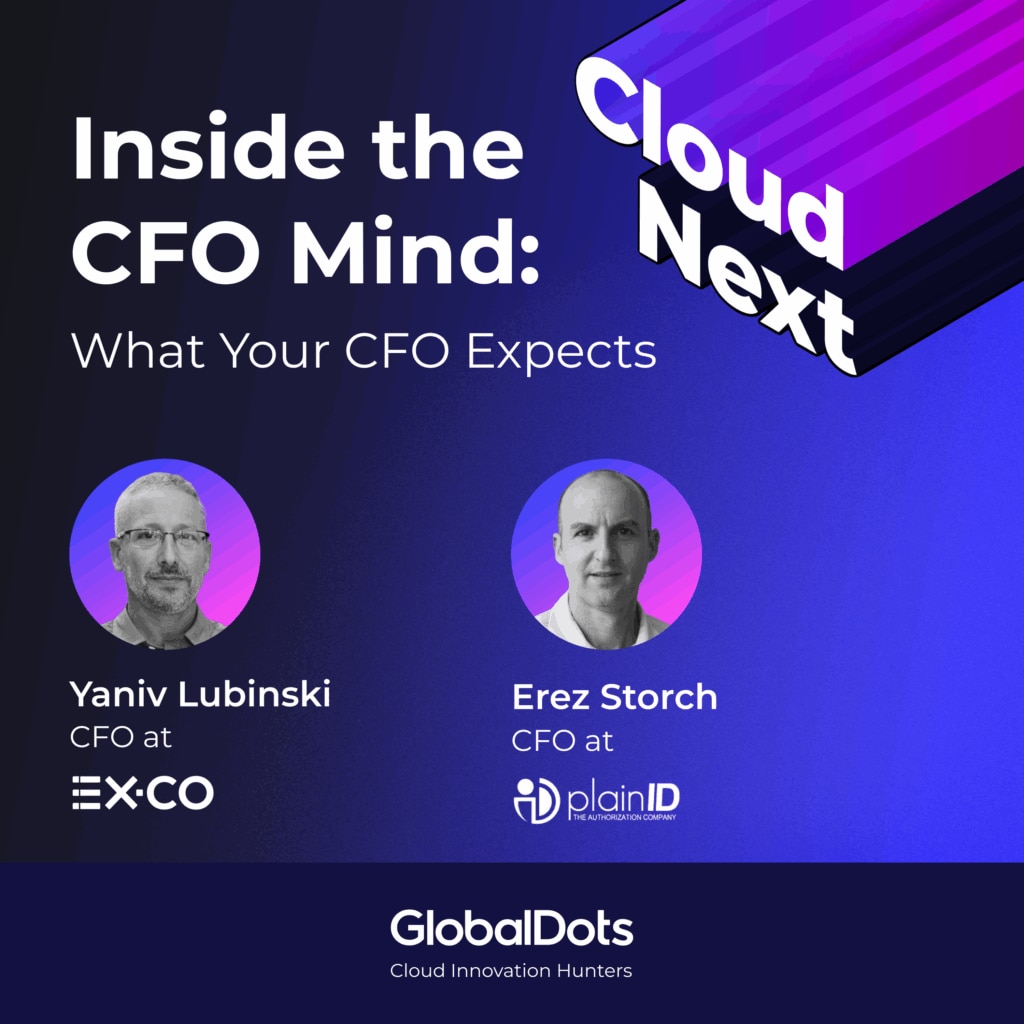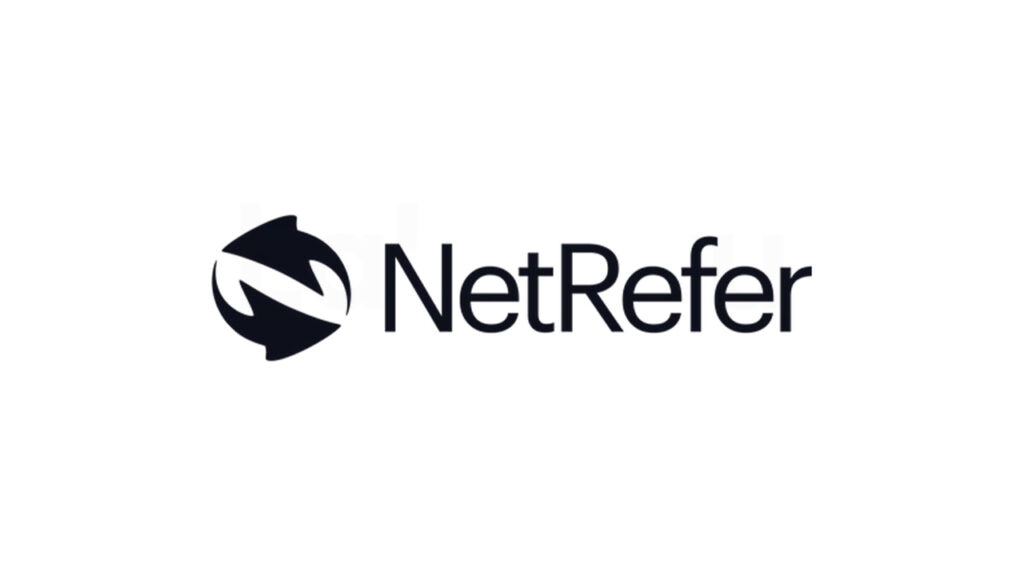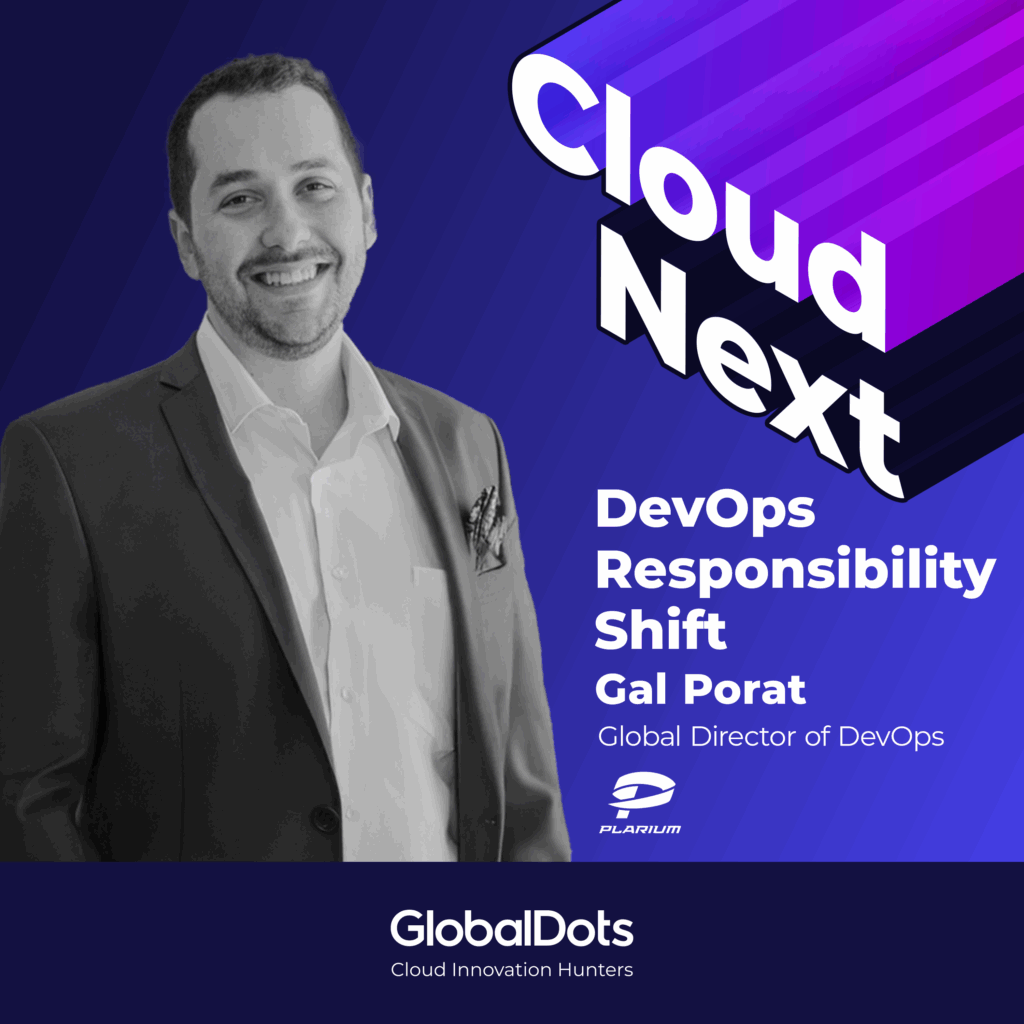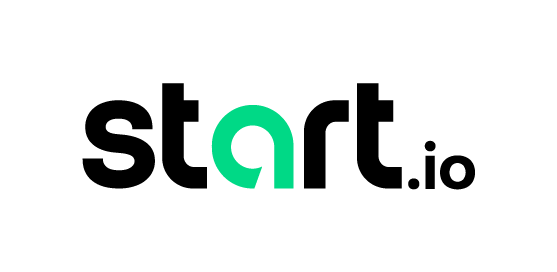This transcript was generated automatically by AI. If you find any mistakes, please email us.
Sean Gill: If you've got the majority of your staff inputting sensitive company information into the model and they're taking that away to train it, you really don't know where that information is going to end up. AI model is using that to retrain itself. hello everyone, you're listening to Cloud. Next your go to source for Cloud innovation and leaders insight brought to you by Global Dots.
Ganesh the Awesome: We're here at CloudHub Berlin where physical meets digital, surrounded by tech leaders tackling some of today's biggest challenges. One topic that keeps coming up is AI how to move from hype to real adoption while dealing with legacy systems, vendor lock in and security concerns. Joining us is Sean Gill, head of new business sales Amir at jumpcloud. Sean speaks daily with organizations across the regions about these very issues, giving him a unique view as to what's holding companies back and how they're starting to move forward. I'm Ganesh the awesome solutions architect at Global Dots, where we research innovations every day so you don't have to. As always, we invite you to join the conversation on LinkedIn. Let us know your thoughts. Welcome, Sean. AI adoption is on everyone's mind. From your perspective, what are the biggest roadblocks companies in EMEA face when trying to move forward with an AI first infrastructure?
Sean Gill: Yeah, thank you very much for having me. First of all, there's a few reasons I think companies are struggling to adopt AI. The first of which is often for a lot of businesses, it is already pretty fragmented. They've got multiple tools that have been built on top of one another. They're not good at communicating with each other. They've been built over a number of years to fit a certain need at a specific period in time. It's very difficult to then turn that into one unified strategy around an AI tool. The second thing I think a lot of customers are facing right now is that they're running on legacy technology, particularly things like Active Directory that really limit what sort of tools they can operate with, how they can give users access quickly to new tools, how they can pivot quickly to new AI tools. Because we know how quickly the space is developing and that's something that they really want to make sure they walk away from and that they've got the ability to move on from. the next bit of that as well is really vendor locking. There's some large vendors out there who really lock you into their ecosystem and that really limits what AI tools that you can use effectively. And so for a lot of companies and a lot of businesses right now, There might be much better fits for them in the AI space, multiple tools. And because they're locked into one environment, there isn't the ability to leverage them. And the final big one that I think is a big worry for lots of companies right now is security, making sure that giving access to AI tools is done in a secure way and also making sure that the AI tools themselves are secure and, and that the data that's being put into them isn't sensitive and is being handled in the appropriate ways. Therefore, the things that we hear regularly, we're hearing them every single day and that we really feel customers are struggling with as they look to move AI into a realistic tool for their business and not just a pipe drink.
Ganesh the Awesome: So you mentioned some interesting topics there and particularly about the vendor lock in. But how does that challenge the way that they're thinking about their modernization?
Sean Gill: I think vendor lock in and the way that challenges their thinking. Firstly, I think for a lot of vendors, they have to really prioritize the users and the user experience. If you've got vendor lock in where people have been very used to one particular vendor or several vendors for a number of years, users are very, very comfortable with that environment. And I think we all know that changing anything in a user's IT journey can really cause them problems and issues and slow down their productivity. And for IT teams, it's the most stressful part of the job, right, because they've got 100 tickets where someone says, why does it work the exact same way that it did before? And so I think for lots of teams, who are looking to avoid that vendor lock in, prioritizing change management and prioritizing user communication and training with the AI tools is really important in what they need to do and how they see success in making that adoption of AI really, really powerful.
Ganesh the Awesome: You also mentioned the security concerns, which are pretty obvious, like data leakage, things going in the AI that shouldn't be in there, or things coming out of the AI that you don't want to come out of there. what do you hear specifically from customers? Their concerns. Those are the obvious ones. But what do you hear from the customers outside of that?
Sean Gill: Yeah, I think with AI, you know, it sounds silly to say, but one of the basic ones is, is just giving access to AI tools in a secure manner. You know, everybody in their consumer life, in their outside of work life, is used to having chatgpt on their phone. They can go to the App Store, they can download multiple different agents or AI programs, they can have that in the palm of their hand and they can, give access to those tools and type in answers very, very readily to those tools as well. So I think for a lot of teams, IT and security, it's about how do we make sure that when people are signing up for AI tools, they're doing it in a secure manner and they're doing it in a way that is controlled and managed by the business. The second thing I think that's really important with AI and something that we hear a lot is about the control of inputs into AI models. So everything that you put into an AI model, right, if it's not the correct one, if it's not one that has the correct terms, conditions or is locked down to your business, they can then use to retrain that AI model. If you've got the majority of your staff inputting sensitive company information into the model and they're taking that away to train it, you really don't know where that information is going to end up. It could end up in the hands of your competitors. For example, about how you've got salespeople putting in. How do we compete against this customer? well, et cetera. The AI model is using that to retrain itself.
Ganesh the Awesome: Sure thing. And everybody must know what a jump cloud is by now. I think you're a pretty international brand. You're mostly thought of as an SSO type platform. how does what you're doing actually relate to those issues?
Sean Gill: Yeah, so for JumpCloud, I think the main thing that we're trying to do is we're trying to remove that complexity from an IT environment, remove the vendor lock in and allow people to choose the tools that are best for them to do their job. JumpCloud allows you to move all of your identity management onto the cloud cloud. Once we're managing that identity in the cloud, we can then provision access to your key applications and make sure that's done securely. We can also manage all of your different, device types as well within the platform. And we have the ability then to do things like conditional access, shadow IT discovery, SaaS management, password management. So you get that complete security, view as well. Because we're platform agnostic, once we've established this, you can then choose the vendors of the best fit for your company. So if you want to use, an AI platform, like let's say Gemini, for example, you can do that. If you want to use ChatGPT, but plug that into your Google Workspace environment, JumpCloak, and make sure that's working effectively and make sure that it's connected securely as well for all of your users. So for us the possibility is around removing that complexity, removing that fragmentation, removing legacy tech and giving you the choice to choose.
Ganesh the Awesome: Makes sense. sounds like some sort of magic AI gateway silver bullet which probably I would have to remain skeptical of in the, working in it for like 20 years. I know that there's no such thing, but baby steps towards there basically, you know, we'll get there in the end. we're here with lots of tech leaders from across the industries in this room. What real world examples have you got where you see you overcoming these barriers and making progress?
Sean Gill: Yeah, I think we're in Berlin, I was going to say sunny but it is slightly gray today but it's still lovely to be here.
Ganesh the Awesome: definitely, definitely not sunny. By the way, he's absolutely pissing it down when it came in today.
Sean Gill: We've been working with a company, Berlin Basin, K, I think I pronounced that correctly. They're based out of predominantly Germany, but they work across Spain, the UK and expanding now into North America. they actually work, they are an AI scale up, predominantly working in the railway industry. So really trying to transform what is quite a traditional industry with the power of AI. Obviously being an AI company, AI is foundational to everything that they do, right. It's involved in all their day to day processes. When they came to us the issue for them was that they are a growing company, they're a scale up company, they're working with large institutional companies as their clients who require them to have a level of security. But they also want to make sure that this distributed workforce that's across the globe can pick whatever tools they need to do the job best. That means that they can deliver their work in the most prompt manner and they can choose the tools, particularly AI tools that are going to be most effective for them to deliver that work on time. So they approached us, we started first of all by condensing all of their different operating systems into one platform and managing all those. So Mac, Windows, Linux, all being managed in one tool. We were then able to help them set up their access controls so they were able to vision access securely to all of those tools that individuals were using. And then once Jumpcat had established that they were able to get their ISO certification established as well. So they get ISO 27001 certified. So they were fully covered from a security perspective. What that then allows them to do, it allows them to go to their institutional customers, prove that they're fully secure, locked down, they're managing everything in a cloud way that's easy, easy for them to manage, effective. And finally as well, it allows them to give their staff and their team members the opportunity to choose whatever tools they can all be accessed securely, whatever device they need to do their work effectively from, no matter where they are in the world. And so it allows them to keep that, fast paced global environment they've already got and make sure that they're still meeting the requirements their customers need.
Ganesh the Awesome: Sounds wonderful. also sounds too good to be true. I still don't totally understand how jumpcloud is helping with the kind of prompts that will go in there. I understand that you're at a secure gateway between the middle of it, so that you are choosing if you're allowed to get to certain apps. But then in the actual discussion between the user and the AI platform, is there something that's going on in there or that's outside of your world?
Sean Gill: No. For us, we leave the AI transparently. We're not going to make the prompts into the AI. For us. For us this is about control of access and then it's about control of the input of data into the AI by controlling access. So I use a very clear example for you. I'm going to use the names here.
Ganesh the Awesome: Deepseek.
Sean Gill: Right. we're all aware of that tool. Very powerful. But there is obviously some security considerations you need to make within that. If you have, a tool like DeepSeek, JumpCloud is able to one show you all of the users who are currently using deepseek within your business.
Ganesh the Awesome: Yeah.
Sean Gill: So therefore you can alert those users they should not be using it. JumpCloud is able to block then any access to DeepSeek. Totally. So users have no ability to go in and use that tool. It's also able. And what jumpcloud's able to do when we talk about controlling access is make that differentiation between the tools. So we don't want anyone to use Deep Seek, but we might be comfortable with people using ChatGPT, even though we're using Gemini as our main AI in house. So what we can do there is we can have a banner on ChatGPT that says this is not the recommended AI for the business. Please revert back to Gemini, for example, that we want you to use, or vice versa. So jumpclad isn't setting up and our goal is not to control prompts or put you in place. Our goal is to give it Teams and security teams, the ability to make sure what the team are using in an AI perspective is the correct tool and that everything that's being put into the AI models is as correct as the possible. So that's where we fit into this is it's about that control because it's great to use AI. If you're not using it in a controlled manner, then really you're opening yourselves up for, for all manner.
Ganesh the Awesome: Absolutely. And we're definitely in the, in the wild west period and there's reasons for fear and all, all sorts of things at the moment. looking ahead, what advice would you give to the tech leaders? people that are here at Cloud Hub with us today do want to embrace AI, but they don't want to get stuck in that fear mindset.
Sean Gill: Yeah, I think there's a few points we can definitely share that I think firstly, the first one me would be make sure you're moving away from those fragmented legacy systems. you know, an AI is only ever going to be as good as the data that's inputted into it. And therefore the more systems you're having to get to talk to each other to feed into any AI to AI tool is never going to be as successful as having one unified clear stack that sits below everything and keeps access secure and keeps everything secure and managed correctly. I think the second thing I would say is really invest in your users and change management, making sure that they're prepared and they understand about what's coming and also the power of AI that they're going to be able to leverage and what that's going to be able to do for their job. And I would say definitely leverage their experts, whether they be individual vendors or partners like Global Dots who are really experienced in the field and can really help you, put together plans for your staff that really works in a mature way. And finally as well, I would say yeah, embrace it and be a leader, model your behavior by leveraging AI as much as possible. If your teams and your staff see you leveraging AI, you trying things and you really investing into the spirit of growth with AI, then once you model that behavior, people feel much more comfortable about doing that themselves and finding solutions. With AI, I think that's a major change that leaders can make just in themselves that can be really powerful.
Ganesh the Awesome: Very sage words. we always like to ask one question before we let you go, which is, thank you for your insights on AI and secure access to AI super cool information. but we like to ask a DeLorean question, which is, if you could go back in time and give yourself any piece of advice, what piece of advice would you give yourself?
Sean Gill: So, yeah, that's a really good question. Tough to think about. so I'm m going to say, I started my career as a maths teacher, back before I moved into technology. And if I could go back and, give myself some advice, I would go back in time and I would make sure that I did that process all over again. I think it was the best training for, my job in terms of getting comfortable speaking to people, speaking to the hardest audience ever, which is teenagers trying to teach maths to them.
Ganesh the Awesome: Oh, yeah.
Sean Gill: And I would make sure that I was aware of how powerful all the lessons I was picking up was at the time. And I wasn't. So I wasn't always complaining about what I had to do. That would be the advice I would give.
Ganesh the Awesome: I definitely salute you. I think I'm the reason that I wouldn't become a teacher and specifically math teacher. I remember giving him hell. So, yeah, that's not an easy road to tread. And eventually AI is maths at the end of the day. So, you know, you didn't fall too far from the tree at the end of the day. Sean, it's been a pleasure having you. any parting words?
Sean Gill: no. Thank you so much for having me on today. Really enjoyable conversation and yeah, excited to be here at the event with Global.
Ganesh the Awesome: Wonderful. That's it for today. Thank you all for listening. If you're ready to rethink your cloud practices and cybersecurity strategy, then the team and I at Global Dots are at your disposal. We've been doing it for over 20 years. It's what we do. And if I don't say so myself, we do it pretty well. So have a word with the experts. Don't be shy. And remember that conversations are, always for free. I'm Ganesh the awesome. And this episode was produced and edited by Toma Mulvidzon. Thank you. Sound editing and mix by Bren Russell. Stay tuned for more episodes.

